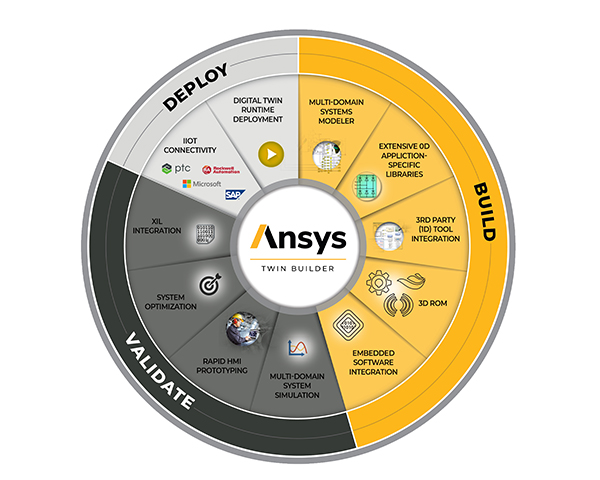DE Podcast: Reexamining the Role of Digital Twins in the Era of Social Distancing
How digital counterparts of real products might facilitate projects during and after the COVID crisis
View or stream online

DE Podcast: Reexamining the Role of Digital Twins in the Era of Social Distancing Duration
6:26 hrs/min/sec
Subscribe today

Latest podcast episodes
Latest News
June 3, 2020

As states and businesses cautiously reopen, many manufacturers find themselves tiptoeing into a new normal. Minimizing close contact and large gatherings, firms must run collaborative design and engineering projects according to the recommended social distancing rules.
For the new environment, we take a fresh look at the digital twins—digital counterparts of cars, planes, and factories, connected to real-time updates. In this podcast, Sameer Kher, Senior Director of Product Development, Systems and Digital Twins, Ansys, shares his thoughts.
Digital Twins in the spotlight
Sameer believes now is the digital twins' time to shine. “They're typically use in predictive maintenance or for optimizing throughput, so in the current environment, they are more relevant than ever. At Ansys, we are seeing an increase in investment in these,” he said.
Predictive digital twins—the ones you can use to simulate the product's response to changes in operating conditions (for example, how might an autonomous vehicle's self-navigation system respond to sleep roads at night?)—are usually a combination of data and 3D models. Ansys specializes in simulation-based digital twins.
“A good recipe for digital twins relies on solid engineering knowledge. Typically, this knowledge is codified as simulation models. So that's an important piece of the recipe ... The next step is to take these models and convert them to a form that can be scaled,” said Sameer.
Ansys's partners such as PTC have proposed using AR/VR (augmented reality, virtual reality) hardware as one way to visualize digital twins. Others advocate the use of PLM (product lifecycle management) systems as the backbone of digital twins.
“There's no single answer to it. We believe we've come up with a unique product, called Ansys Twin Builder. With this, you can quickly build and deploy a simulation-based digital twin,” said Sameer.
For the full conversation, listen to the podcast.
In the upcoming Ansys Simulation World, there are various talks and panels focused on digital twins.
Digital twins are also on the agenda of CAASE20, organized by NAFEMS, cohosted by DE.
About the Speaker
Sameer Kher, M.S., M.B.A., has over 15 years of experience creating software products. He is Director of Product Development at Ansys, responsible for Digital Twin and System Simulation activities. Most recently, Sameer conceived and launched Ansys Twin Builder, a product that enables the use of simulation in operations. He has a background in engineering with a BS in Electronics, an MS in Computer Engineering and an MBA from Carnegie Mellon University.
More Ansys Coverage
Subscribe to our FREE magazine, FREE email newsletters or both!
Latest News
About the Author
Kenneth Wong is Digital Engineering’s resident blogger and senior editor. Email him at kennethwong@digitaleng.news or share your thoughts on this article at digitaleng.news/facebook.
Follow DE



